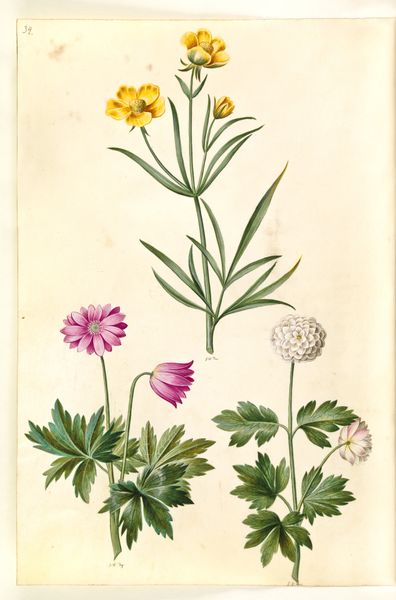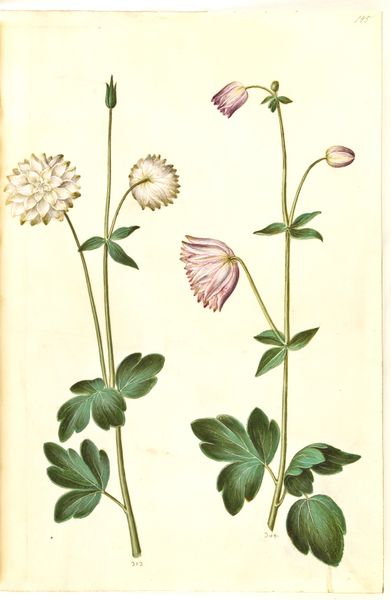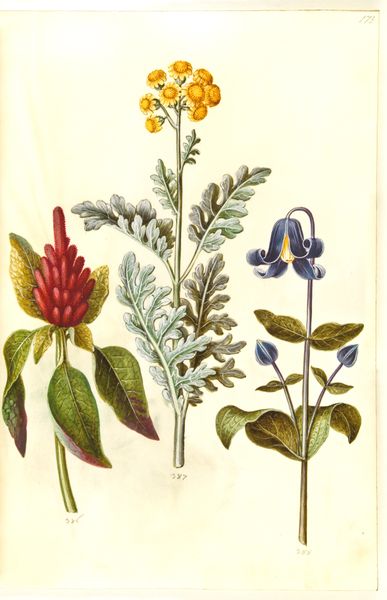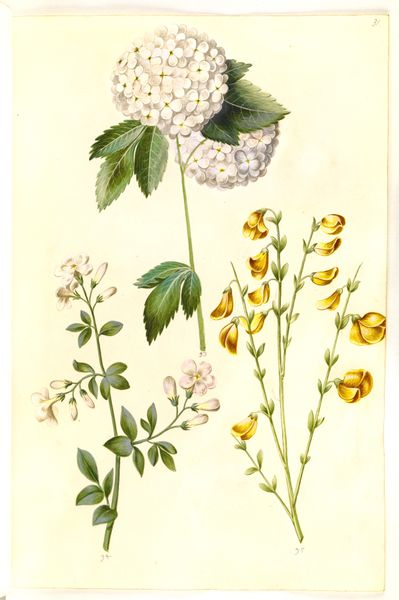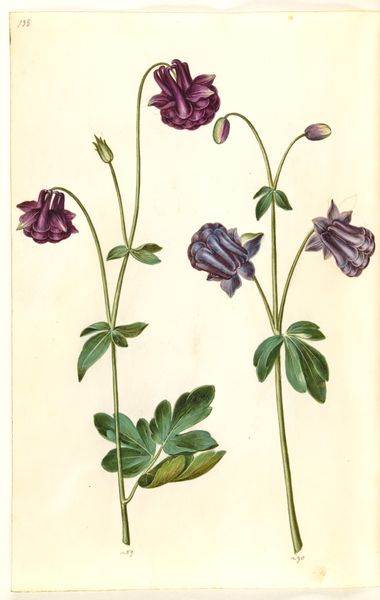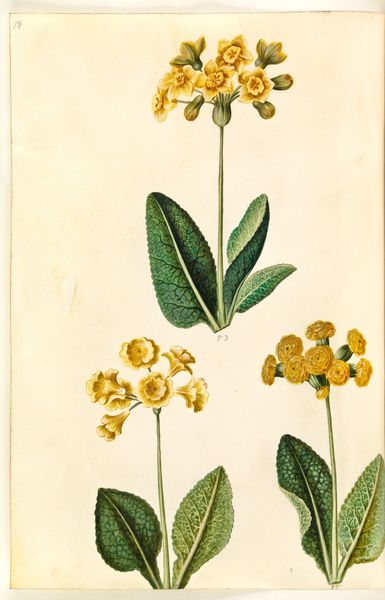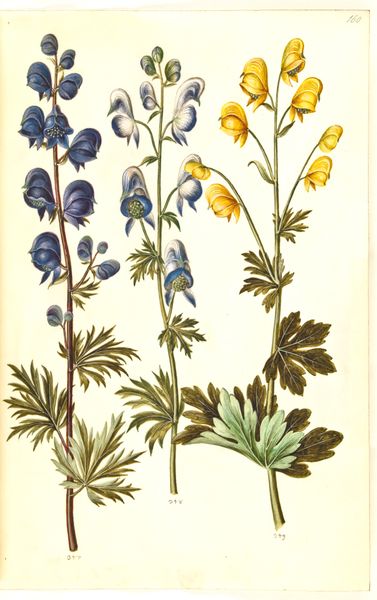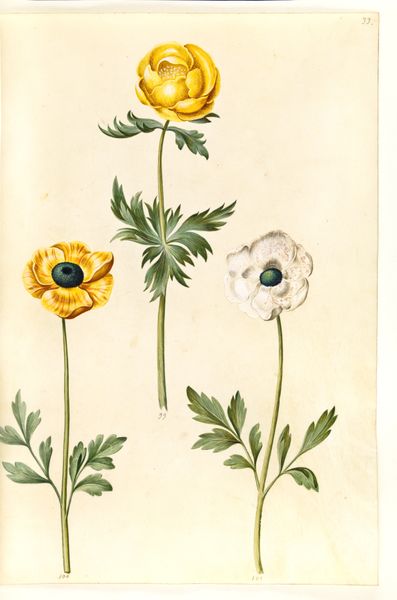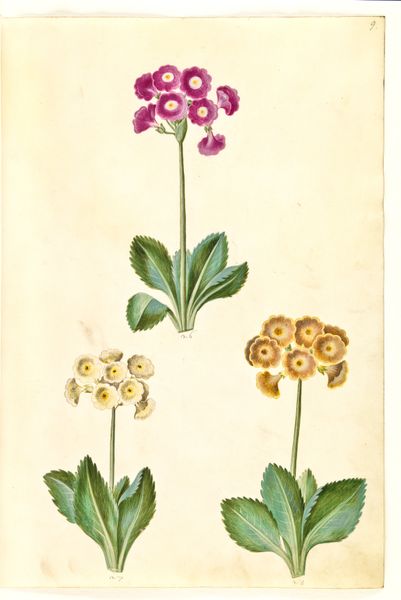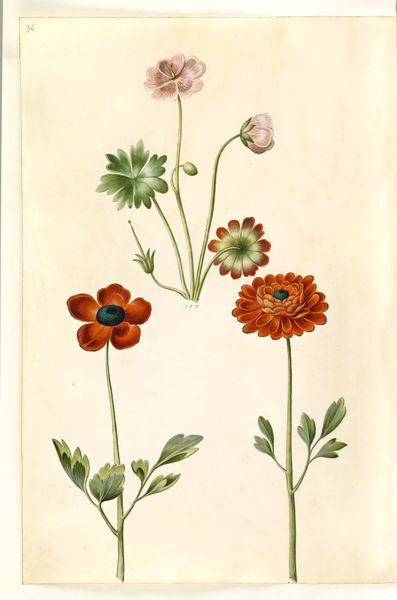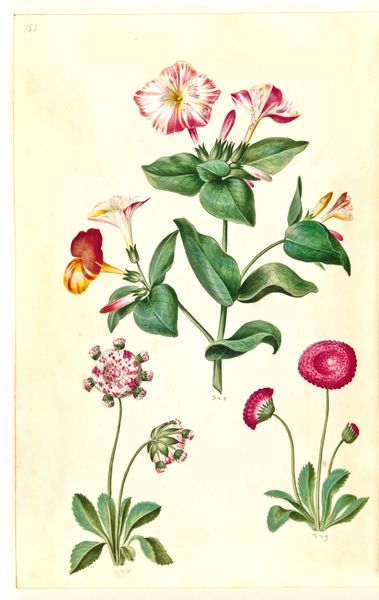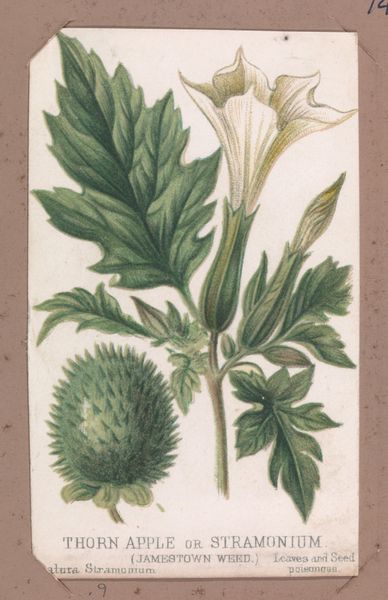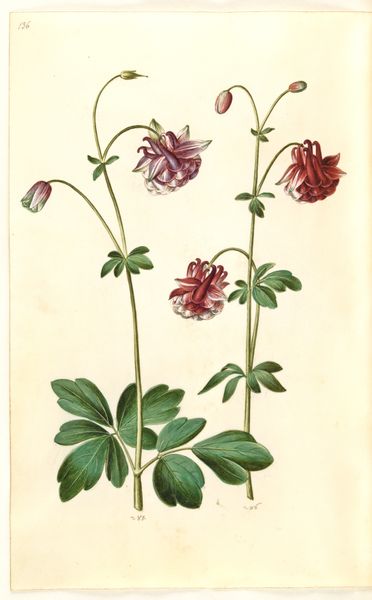
Helleborus niger (almindelig julerose); Eranthis hyemalis (have-erantis); Gagea lutea (almindelig guldstjerne) 1635 - 1664
0:00
0:00
drawing, gouache
#
drawing
#
gouache
#
11_renaissance
#
botanical drawing
#
northern-renaissance
#
botanical art
Dimensions: 375 mm (height) x 265 mm (width) x 85 mm (depth) (monteringsmaal), 357 mm (height) x 250 mm (width) (bladmaal)
Curator: So, here we have "Helleborus niger (almindelig julerose); Eranthis hyemalis (have-erantis); Gagea lutea (almindelig guldstjerne)", created sometime between 1635 and 1664. The artist was Hans Simon Holtzbecker, and it’s made using drawing and gouache. Editor: Right off the bat, I get a feeling of serene observation, like stepping into a hidden corner of a Renaissance garden. There’s something so gentle and precise in the way each flower is captured. Curator: It's a gorgeous example of Northern Renaissance botanical art. We have to remember that in the 17th century, accurate botanical illustrations weren't just beautiful; they were crucial for scientific understanding and, indeed, for burgeoning pharmaceutical knowledge. Holtzbecker wasn't just painting pretty pictures; he was contributing to a wider project of cataloging and understanding the natural world, often tied to colonial ventures and the exploitation of nature. Editor: Ah, the dualities! Beauty masking knowledge-seeking and a subtle connection to broader systems of power. You can almost feel the artist's careful breath as he renders each delicate petal. What's particularly interesting is the composition. The artist isolates each specimen against a blank background. What does that stylistic choice communicate? Curator: Good question. Isolating the flowers encourages a focused study. There's an implicit emphasis on pure observation. Stripped of any context, the forms speak directly to a kind of ideal specimen for the interested doctors and apothecaries of the time. Editor: Exactly! There is something deeply peaceful about the rendering of light and shadow on the petals. For me, this connects to broader conversations in art, gender and how historical practices are viewed differently depending on one's location and historical moment. Curator: It speaks to a desire for a pristine, almost clinical, observation that is also embedded within wider power structures of resource allocation in the Renaissance period. Thank you for joining us for this exploration. Editor: I walk away feeling grateful for the tiny universes blooming on paper—an encounter both gentle and quietly charged.
Comments
No comments
Be the first to comment and join the conversation on the ultimate creative platform.
